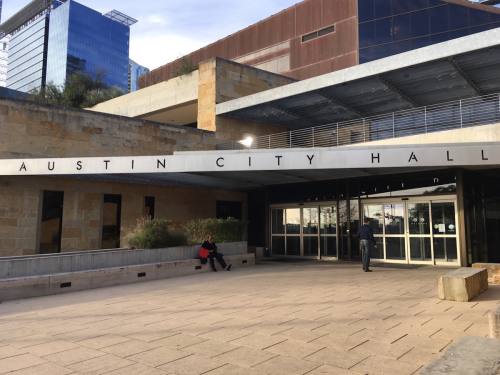Austin City Council members say the CodeNEXT team needs to provide more granular level and comparative data before council members feel comfortable taking a vote in 2018 on the new land development code and zoning maps.
There was a sense of existential uncertainty at Wednesday’s special-called council meeting on CodeNEXT—the city’s four-year, $6.2 million land development code overhaul. As the final phase of the code’s first draft concludes, council members felt it necessary to call in the CodeNEXT team and gain some clarity as to where they are and where they should expect to go.
The meeting was saturated with inside baseball jargon, claims and numbers that appeared to go even over some council members’ heads. Here’s a translation of the biggest takeaways from the Wednesday’s special called meeting:
1. Council was not happy that staff published the raw data used to make housing projections for the new code
Two weeks ago, city staff discretely published a robust raw dataset on the CodeNEXT website calculated by Envision Tomorrow—a planning calculator developed by CodeNEXT consulting firm Fregonese & Associates—that included 10-year projections for the population growth, housing capacity, housing supply, and redevelopment rate for certain areas and zones as a result of the first draft of CodeNEXT and its accompanying zoning maps.
Planning and Zoning Director Greg Guernsey said staff published it in response to requests from members of the public. District 7 Council Member Leslie Pool expressed her strong sentiment that staff should have released the numbers to council first.
2. The data was confusing, some of it irrelevant, and resulted in many rushed conclusions
The numbers were published in an intricate spreadsheet. Some of the numbers that caused the most uproar—such as the number of people expected to be displaced by redevelopment—were irrelevant to Austin, according to Alex Joyce, a principal with Fregonese & Associates, and published under an inaccurate header. Staff published the corrected version in the middle of Wednesday’s meeting.
Joyce implied several times throughout the meeting that the numbers, which are based on several assumptions, were what “could” happen, not what “would” happen.
3. Council and the public need more context and staff needs to provide it
Among the biggest issues with the numbers was the lack of context. While the numbers projected that 22,394 housing units could be redeveloped, and an estimated 162,011 new housing units could be constructed, there was no comparison with how those number stack up against the current code. Mayor Steve Adler and District 4 Council Member Greg Casar both said these same numbers needed to be calculated for the current code.
4. The projections need to be district, and even neighborhood specific
District 1 Council Member Ora Houston said staff needed to produce numbers at a more granular level. She said the council and the public need to see where they expect these new housing units to be built, and how the new code will impact specific council districts and their neighborhoods.
5. Council needs more data to be certain CodeNEXT is right for the city
Overall, the council said more precise data on how CodeNEXT will affect the city is necessary before any final vote is taken in 2018. Joyce said Fregonese is working on producing housing projections for each council district and the impact that could be expected.





